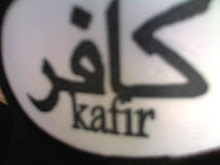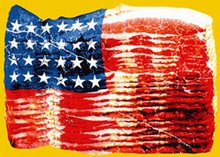Kyrgyzstan: IAEA seeks answers to Radioactive Seizure. On train heading to Iran.
This is weird.
Back in December some Cesium-137 was discovered aboard a freight train bound for Iran. The seizure occured 9 days before the Kyrgyz government got around to notifying the IAEA and they haven't been exactly forthcoming since. It's troubling too, because cesium-137 is the "favored substance of terrorists seeking to build a radiological "dirty bomb" or to launch a so-called "I-cube attack," which would use the easy ingestion, inhalation, or immersion of the powdery chemical to kill on a large scale." Levels of radiation were so high that the "Emergency Situations Ministry" had to ask for VOLUNTEERS to clean it up. Also troubling: The material passed through three border checkpoints without being detected. Even more troubling: Kyrgyzstan is loaded with poorly secured radioactive waste dumps. Experts hypothesize that "negligence or incompetence" are the chief culprits - but still...
The UN's International Atomic Energy Agency (IAEA) has lodged a formal request with the Kyrgyz government to provide more detailed data on the troubling incident that unfolded in the last days of 2007. But an IAEA official has told RFE/RL that the Vienna-based nuclear watchdog is still awaiting an official reply from Kyrgyz officials -- a week after they announced that dangerous levels of the radioactive substance cesium-137 had been discovered aboard a freight train bound for Iran.
About the incident:
In late December, radiation detectors alerted Uzbek border guards to the presence of dangerous material. The guards then sent the train back to Kyrgyzstan, where the State Environmental Agency says it was first informed of the incident on December 29. Kyrgyz officials later seized the substance and stored it in a special holding area. In an interview with RFE/RL's Kyrgyz Service on January 9, Almabek Aitikeev, a senior official with the Kyrgyz Emergency Situations Ministry, offered some details about the material. It was identified as cesium-137, a product of nuclear reactors and weapons testing that is often used in medical devices and gauges."Not quite a bucketload of radioactive waste material was there mixed in with sand, dust, and snow," Aitikeev said. "We did our work and sealed up the waste on December 31."
But details remain sketchy. The Kyrgyz National Security Service continues to decline requests for comment on the incident, as does the Kyrgyz state railway company Temir, which loaded the material in Kyrgyzstan along with nonferrous scrap metals onto the train, which belonged to a Tajik company. Kyrgyz officials confirm the train's ultimate destination was Iran, which is linked to the region via railway through Turkmenistan and regularly imports Central Asian scrap metal.
Swiss cheese borders.
"It passed through our border, the Kyrgyz border [and] it passed through two border checkpoints in Kazakhstan, entering and exiting [Kazakhstan]," Noruzbaev said. "Only on the territory of Uzbekistan was it discovered, and they [the Uzbeks] sent the train back to us."
Noruzbaev said the radioactive material should have been discovered long before the train arrived in Uzbekistan. "But how could it happen that it was not detected when it passed through special checkpoints?" Noruzbaev said. "And even more so, how could a [radioactive] source like Cesium-137 or -140 pass [without detection]?"
Volunteers?
The Kyrgyz news agency 24.kg reported on January 9 that the levels of radiation being emitted from the train car were so high that Emergency Situations Ministry asked for volunteers to go and unload the cargo. Four people wearing special protective clothing volunteered to venture into the wagon where they discovered the source of the radiation: dust and waste material on the floor, which they swept up and deposited in a bucket. The bucket was then sealed in concrete and stored in a special facility.
Reports say the material emitted 1,000 milli-roentgen per hour, which is considered a dangerous level. Most companies handling such material consider 5,000 milli-roentgen per 2,000-hour work year to be the "regulatory upper limit" for safety. "It emits radiation, radioactive waves, and they are harmful, maybe not in mediocre amounts but prolonged exposure," Noruzbaev said. "If you held it a while, depending on the dosage, you would get burns of varying degrees."





|